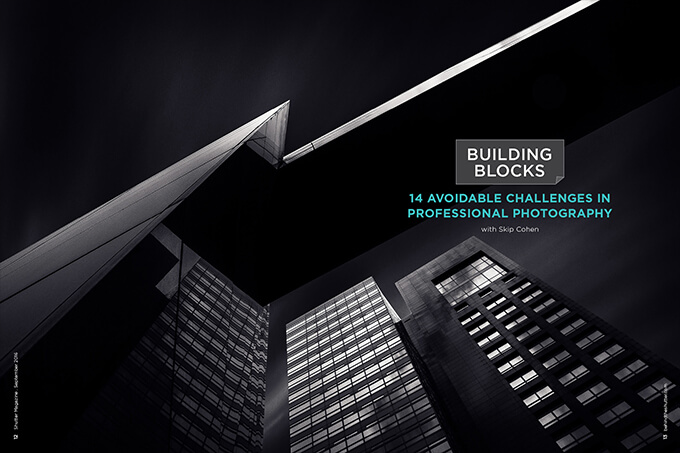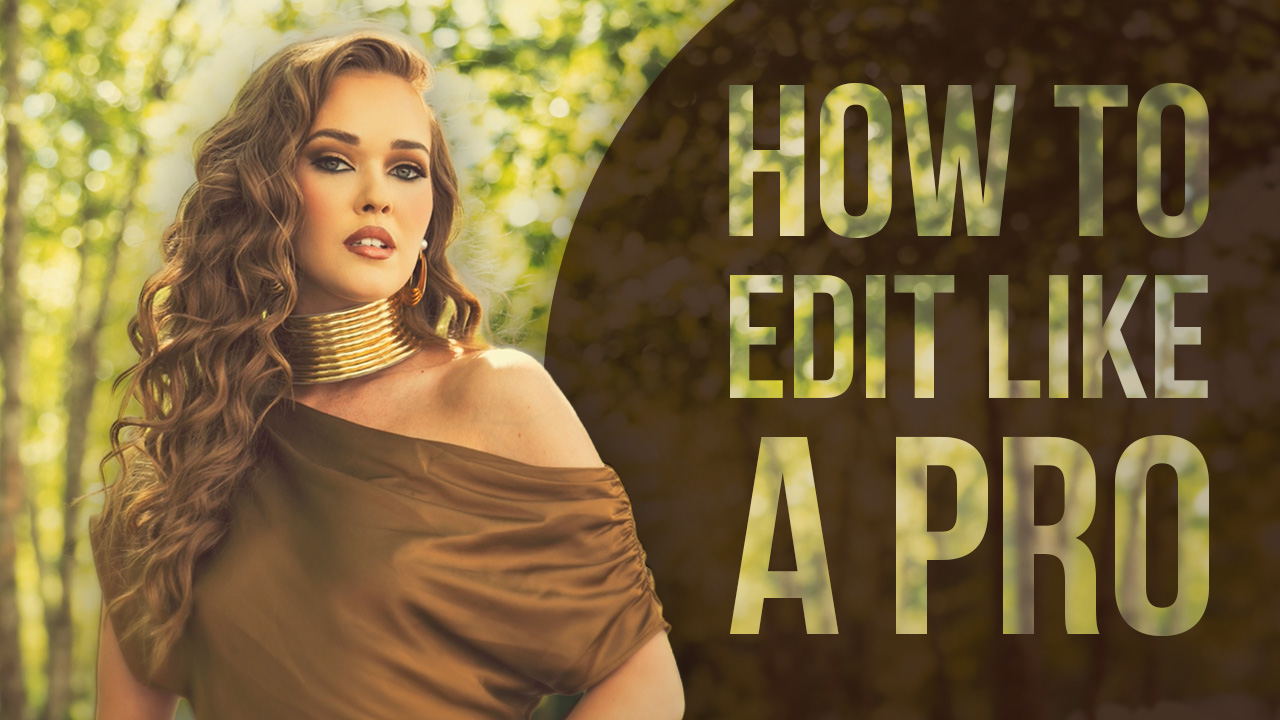14 Avoidable Challenges in Professional Photography with Skip Cohen
I’ve contributed to every issue of Shutter Magazine, and not once have I resorted to a rant, at least not here in print. Well, it’s time to share some of my top pet peeves. I’ve got one goal: to get you to realize the mistakes I see so many of you making, and help you turn them into assets!
- Headshots that Uncle Harry could capture. This is right at the top of the list. You’re a professional photographer or, at the very least, aspiring to be one. Your goal is to get people to hire you because of your skill set. Remember that old expression: “You never get a second chance to make a first impression.” In regards to your headshot, get rid of that poorly lit portrait. Throw away selfies that a teenager would use. Trade in horrible portraiture for a well-lit and posed professional-looking headshot.Even better, get a shot of you working. Put a camera in your hand. Have an associate photograph you from the side and slightly behind you as you’re working a subject. That will capture an image of you working, with your subject in the background and slightly out of focus.
You’re not going to impress anybody with a bad headshot.
- Doesn’t anybody proofread anymore? I get that you’re an artist. You didn’t go to school to be a writer, but that doesn’t mean you have to sound like a moron. I’ve received email blasts from photographers and couldn’t understand what they were talking about.You’ve got a few options. If you really can write but are just too rushed, take the time to read what you’ve written out loud. Then read it to somebody else. There’s very little I ever write that my wife, Sheila, doesn’t take a look at for me.
Here are two other options: Check out Grammarly.com. I love it. It won’t catch everything you’re trying to say, but proofreading out loud together with Grammarly will help you dramatically. The other option, especially for those who truly hate to write but are trying to maintain a blog, is to hire somebody to write for you. Wander into a local high school and find yourself an “A” English student.
- Stop being a gear hound. Great gear doesn’t make great artists anymore than owning a Porsche makes someone a great driver. Stop buying gear. Instead, learn every feature of what you already own. And, if you just can’t resist the urge or there’s something out there you truly need, rent equipment before you invest.Every professional photographer who’s been in business for five years or more has a story about something they bought that they just didn’t need. What they did need at the time of purchase was cash flow. Instead, they tied up money in equipment that was rarely used and later traded in or sold at a loss.
As Vincent Laforet once said in a program at Skip’s Summer School: “When I didn’t have a long enough lens, I learned to move in closer.” Don’t be a slave to your gear.
- You’ve got a phone—why keep the number a mystery? This is right at the top of the list. I’m so tired of photographers who have a contact page but force potential clients into an email template form. Communicating by email is fine, but we’re an instant-gratification society, and you’ve got a phone. Give consumers a way to talk to you. The only thing stronger than meeting with a client in person is talking to them directly.There’s no such thing as too much information on your contact page. And, for those of you who work out of your home, I understand not wanting to share your address. That’s fine, but give potential clients a phone number and your personal email address.
- How long would you be willing to wait? Think about those templates for email communication. Ever filled one out and then waited days for the company to get back to you? By the time they got back to you, more than likely you had lost interest.If you’re going to offer an email system on your website, then at least respond within a couple of hours. In the wedding business, you’ll find that the first photographer to respond to a client has a better chance of actually booking that event.
- Got a listening disorder? You’ve got two ears and one mouth, so listen twice as much as you talk. Not meeting the mindset of a client, especially brides, is one of the top complaints. That means you’ve got to listen to your clients and, if you don’t understand something, ask for clarification.
- “There isn’t time to blog more often.” If you can’t post twice a week, then give up your blog until you get more organized. Your website is about what you sell, but your blog is about your heart. It’s an opportunity for you to be helpful to your readers and share content they’re interested in hearing. When you post to your blog every full moon at best, you’re not building readerships; there’s no activity being directed to your business, and people might start to wonder if you’re still in business.The number-one key to success with a blog is consistency.
- Think quality, not quantity. When it comes to your galleries, pretend it’s the old days, and you’re showing work in a printed portfolio. At best, you might have had 20 to 30 images. So many of you think you need to show everything you’ve photographed.I’ve visited galleries with hundreds, even thousands of images, and most of them were mediocre. If the image isn’t better than what Uncle Harry could capture, don’t show it. Less is more. If it’s not a “wow” print, don’t share it. (A “wow” print is an image so good, it’s the only one you’d have to show to get hired.)
- “I’m a natural light specialist.” Come on—if you’re an artist saying that, you might get a client to believe it, but the rest of us know you’re afraid of studio lighting and took a shortcut on the way to starting your career. We all love natural light, but the key to calling yourself a professional is understanding how to create outstanding images in any situation. That means you need to know how to light and pose your subjects with and without natural light.
- “I can’t afford backup gear.” Well, then stop calling yourself a professional. Sooner or later, something is going to fail, and the challenge of being a professional is having enough depth in your gear to handle those short-term emergencies. That means going on assignment with no less than one backup camera body, an extra lens or two, and additional lighting.
- “Yeah, I took all of those images.” Building images for your portfolio with models is a terrific way to both practice and show your clients you know what you’re doing. But standing behind instructors at workshops and shooting over their shoulder and then calling it your work is bogus. It’s the instructor’s image, not yours. If you can’t duplicate the technique later, you’re in trouble.
- “Let it go, let it go!” If you’ve got kids, you know the song from Frozen, but if you’re obsessed with battling it out in online forums, maybe you need to sing it more often yourself. I see it all the time.Here’s the scenario. Somebody posts an image somebody doesn’t like in a Facebook forum, and you get sucked into the battle. Suddenly you’re contributing to a thread of comments that’s completely off track. At some point, your blood pressure is up, you’re aggravated and you’ve done nothing but waste your time and everybody else’s.
Don’t take on trolls. Stay out of arguments that are none of your business. If somebody has already written what you were going to say, then simply shut up. Time is your most important commodity. As Winston Churchill wrote: “If you throw stones at every barking dog along the way, you’ll never reach your destination.”
- I heard it through the grapevine. Stay out of the rumor mill. If you have a question about somebody and it’s not public knowledge, pick up the phone and call them directly. Don’t spread rumors. I’ve seen companies lose sales because some idiot said they were going out of business. I’ve seen talented photographers simply withdraw because a troll started a vicious rumor. Don’t spread bad news unless it’s somehow helpful to people and obviously true.Most important of all, remember whom you’re talking to. Over and over again, I’ve seen artists in hot water because they shredded somebody and didn’t realize the person they were talking to was the shreddee’s employer, best friend, etc.
- “That’s good enough.” Never compromise on the quality of anything you do. Nothing is “good enough” unless it’s the very best you can do. From images to marketing campaigns to your relationships—it takes such a small investment to do things right and be the very best. You’ve got a choice in how you want to be perceived, and being the King or Queen of Mediocrity shouldn’t be on the list.
There it is, gang, my Top 14 Pet Peeves in professional photography. All of them are fixable and avoidable. They all fall under one main category: Pay attention to the rules of engagement.





This Post Has One Comment
As a full time professional that travels the US shooting, I agree with everything you’re saying. I’m man enough to admit that I need to change up my galleries and have made progress in that area very recently. I do have a good friend that is a full time pro that doesn’t want his phone number published anywhere online and only has a form on his nicely done website. I do read many of the stupid comments online from time to time but I avoid getting sucked in. I’m too busy and don’t have time for it. Thanks for writing this and I plan to revisit the points you made.